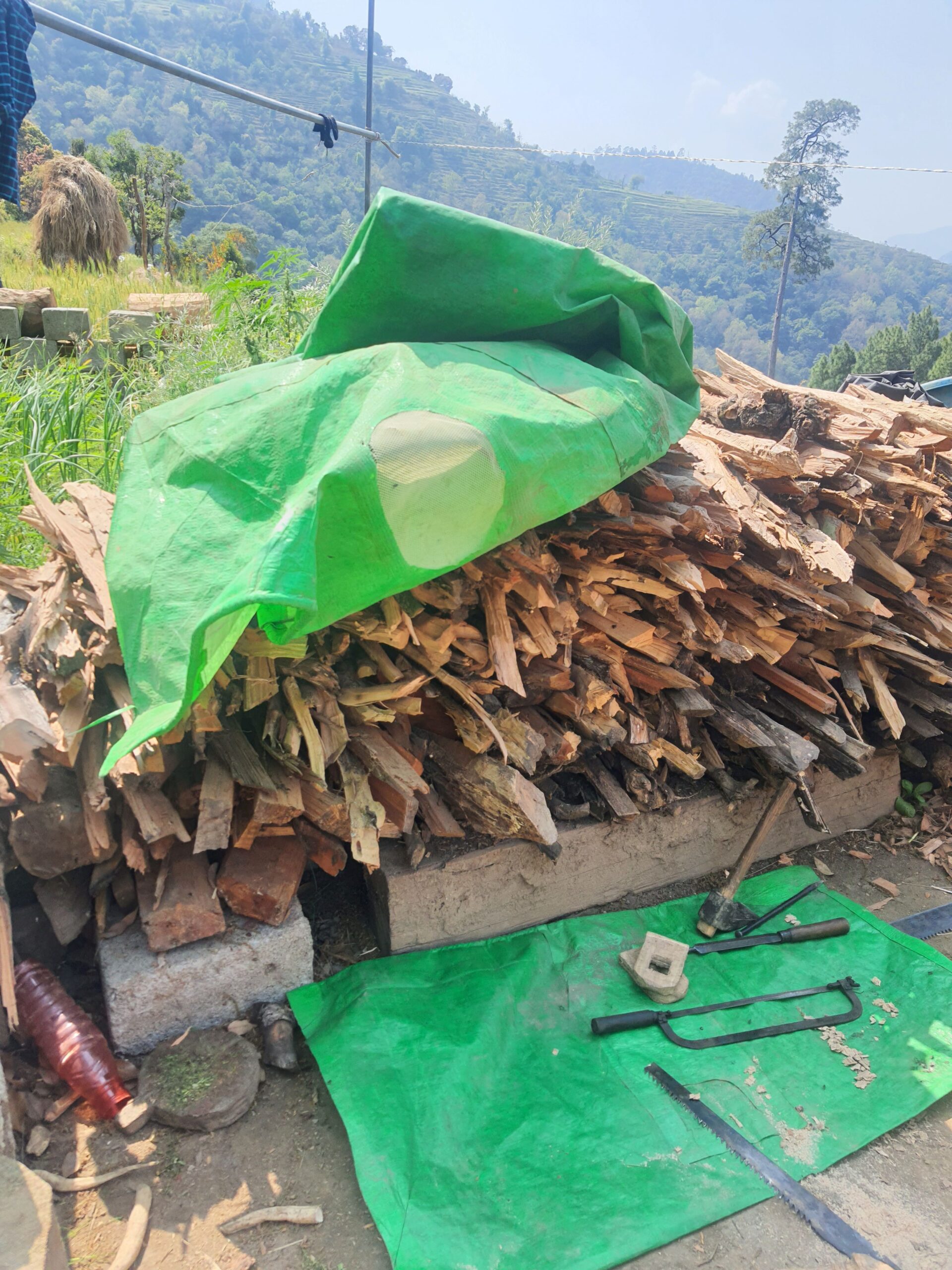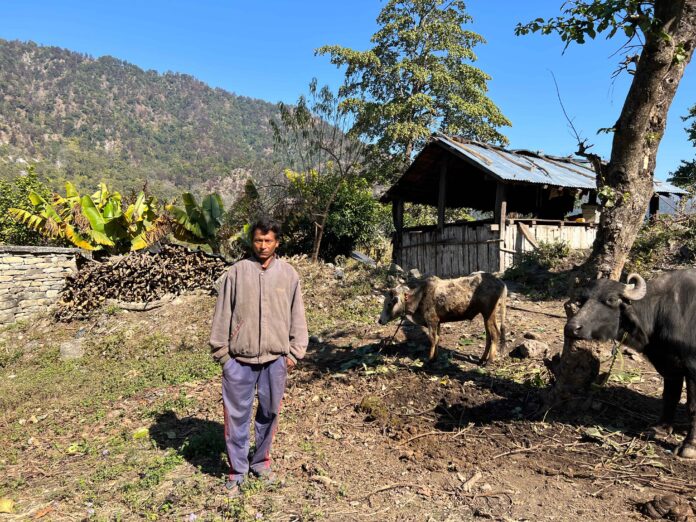When Adivasi land rights are framed as tickets to government handouts, both cultural traditions and nature conservation hang in the balance, explains Dipika Adhikari, Twocircles.net
The Rajwar peoples find themselves at a crossroads in a quiet and tucked-away village within the folds of Uttarakhand’s Askot Wildlife Sanctuary. Officially identified as Van Rajis, a Particularly Vulnerable Tribal Group (PVTG), they prefer to be called Rajwars. Their struggle for forest land rights seems to have taken a surprising, perhaps unsettling, turn.
What was once an agitation to reclaim ancestral land has reportedly evolved into a pursuit of welfare state benefits, specifically the cash transfers promised by schemes linked to land ownership. The sacred bond between the community and its forest appears to be slowly unfastening, altered by the bureaucratic calculus of welfare eligibility.
Back in 2006, the Forest Rights Act (FRA) held out a transformative promise – to correct what it called a “historical injustice” done to Adivasi and traditional forest-dwelling communities. It was supposed to restore not only land rights but also respect and recognition, ensuring Adivasi people could live, cultivate, collect, protect and manage their customary forests with dignity.
The FRA was comprehensive. It provided for individual land rights for habitation and cultivation, community tenure over minor forest produce and collective custodianship and conservation rights – practices central to both cultural survival and ecological sustainability.
For PVTGs like the Rajwars, the law was especially generous and designed to offer legal standing and stability in protected areas where they had long faced exclusion.
But as with many policies, the promise has not quite matched the reality.
Today, the ground-level implementation of the FRA appears to be drifting from its original intent. Instead of ensuring deep-rooted rights and restoring traditional relationships with the forest, it has, in places like Askot, been reportedly reduced to a kind of transaction – land for cash.

“We were told land would be distributed under the Forest Rights Act and we would receive money afterwards like farmers from neighbouring villages who get Rs 2,000,” said a Rajwar woman elder.
She was referring to the Pradhan Mantri Kisan Samman Nidhi scheme, a central government program offering about Rs 6,000 (roughly $70) annually to small landholders.
For poor, marginalised families like the Rajwars, such financial assistance can make a big difference. But the way this scheme has reportedly come to frame forest rights, as a gateway to welfare eligibility, raises deeper concerns.
For one, this approach seems to sideline the very soul of the FRA. The core idea was to empower Adivasi communities through recognition of their ownership, stewardship and custodianship, honouring their socio-economic and cultural relationships with the forest. When that gets reduced to a means for cash access, the symbolic and practical weight of the law is diluted.
Second, by framing land rights primarily as eligibility markers for welfare schemes, the policy risks leaving Rajwars dispossessed in more ways than one. They may hold land on paper, but their access to forests, their role in management and their traditional resource collection practices reportedly remain restricted. Women, especially, face daily barriers.
“The forest guards scold us for taking grass, fodder or fuelwood. We are always frightened and worried about running into them. We pray not to see them when we go to the forest,” said a group of Rajwar women.
Despite the FRA’s legal provisions, Rajwars’ rights to manage or protect forests collectively remain unrecognised. In fact, records from Uttarakhand reveal that community forest rights continue to be systematically rejected in the region.

The unseen environmental price of insecure tenure
This narrow interpretation of forest rights has ripple effects – both social and ecological. With traditional forest access restricted and formal recognition elusive, Rajwars have allegedly turned to unregulated means of survival. Prominent among these is chirani – local timber logging.
Once a practice rooted in craftsmanship, where wood was carved into utensils and bartered, chirani today refers to contract-based logging. It suggests a shift not just in activity but in the community’s relationship with the forest.
Large timber logs in many households are now hand-split into smaller fuelwood pieces, which are sold to local businesses like restaurants and breweries.
While these activities remain outside formal oversight, forest officials are reportedly aware.
“Rajwar people take logging contracts. They mostly do it at night so we cannot catch them. We tell them not to cut the trees, but they do not listen,” said a forest official.
This official stance leans heavily on the familiar “tragedy of the commons” narrative. But such framing, critics say, misses a deeper truth, which is Rajwars are not intentionally degrading their forest. They are reacting to a structural setup that allegedly denies them formal rights yet offers no alternatives for subsistence.
“If we do not do chirani, how will we feed our children?” asked one Rajwar. The question cuts to the heart of an alleged systemic failure.
Tenure insecurity does not just disrupt cultural practices. It severs communities from conservation. Without recognised collective rights, Rajwars reportedly lack the authority, or incentive, to regulate logging internally. There are no formal forest committees and no traditional institutions entrusted with stewardship. The forest remains classified as state property, which is absent of community control or responsibility.
Compare this with the example of Gadchiroli, Maharashtra, where collective forest rights under the FRA have enabled many communities to manage resources sustainably with state and civil society support. The contrast is stark.
In Askot, however, unchecked logging continues not under the glare of industrial development but in the shadows of survival. Forest officials express growing concern about deforestation and sustainability, especially in this ecologically fragile Himalayan belt.
Conservation without Rights is a losing game
What is unfolding in Askot is more than just a local governance issue. It highlights a broader truth – you cannot isolate conservation from community rights. Without secure tenure, communities may be driven, by necessity rather than choice, into extractive practices.
To change this, we must go back to the original spirit of the FRA.
The path ahead calls for a more holistic vision – one where rights are not just paper promises but real tools for empowerment. Forest rights must be recognised as fundamental entitlements, not just criteria for welfare access. Community tenure should be implemented with the same urgency as individual land claims.
Equally important is the revival and formal recognition of traditional Adivasi institutions that once regulated forest use with nuance and care. If strengthened and supported, these structures could offer locally rooted systems of accountability and stewardship.
Unless policy and implementation realign with this broader vision, both the Rajwars and their forests will remain trapped in an unfinished cycle, paying the price for alleged incomplete justice because true forest rights are more than land, they are about identity, responsibility and the shared future of people and planet.
(Dipika is pursuing doctorate in Resources, Environment and Development at Crawford School of Public Policy, the Australian National University)


